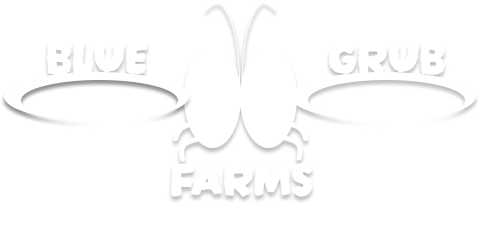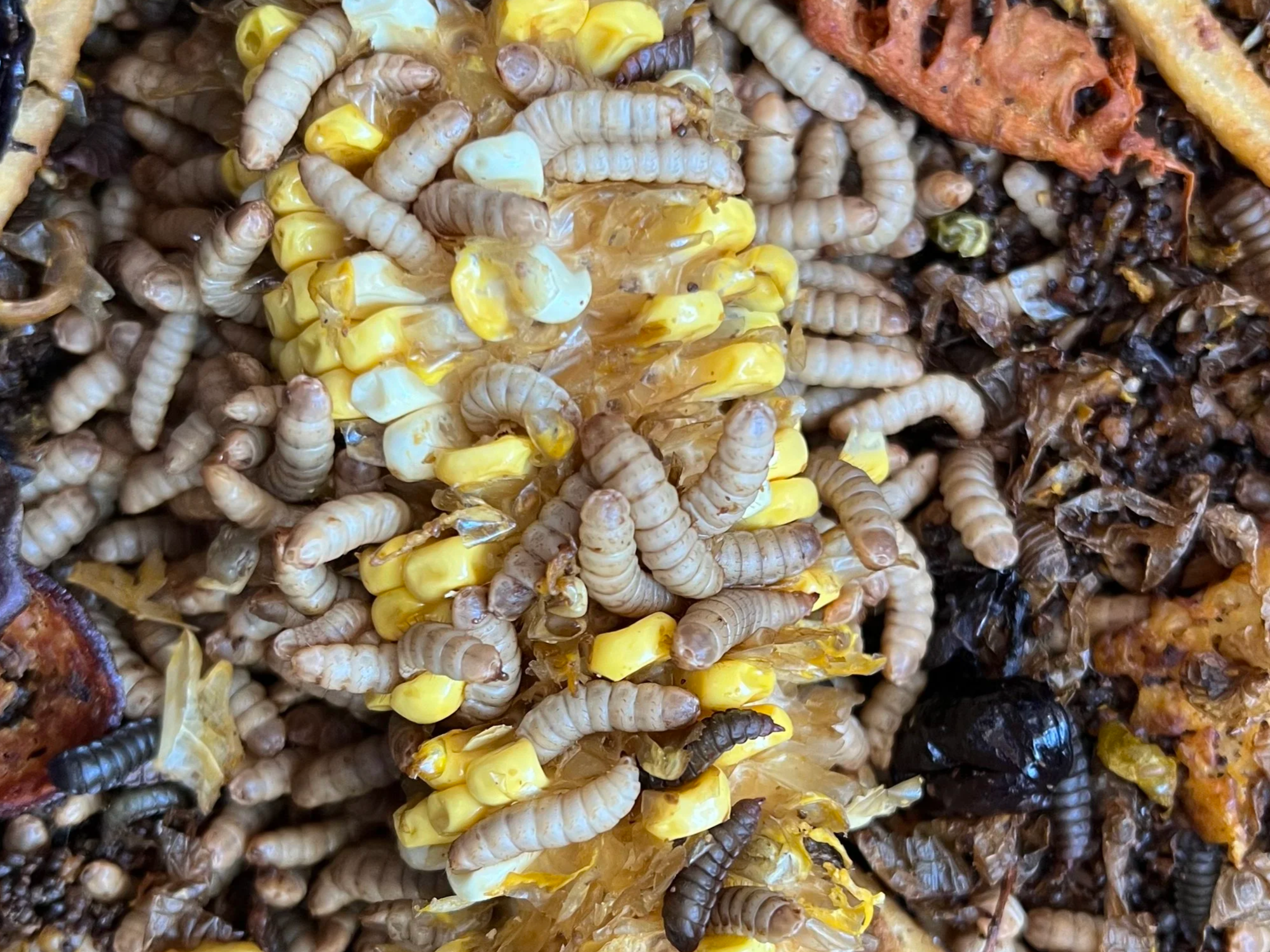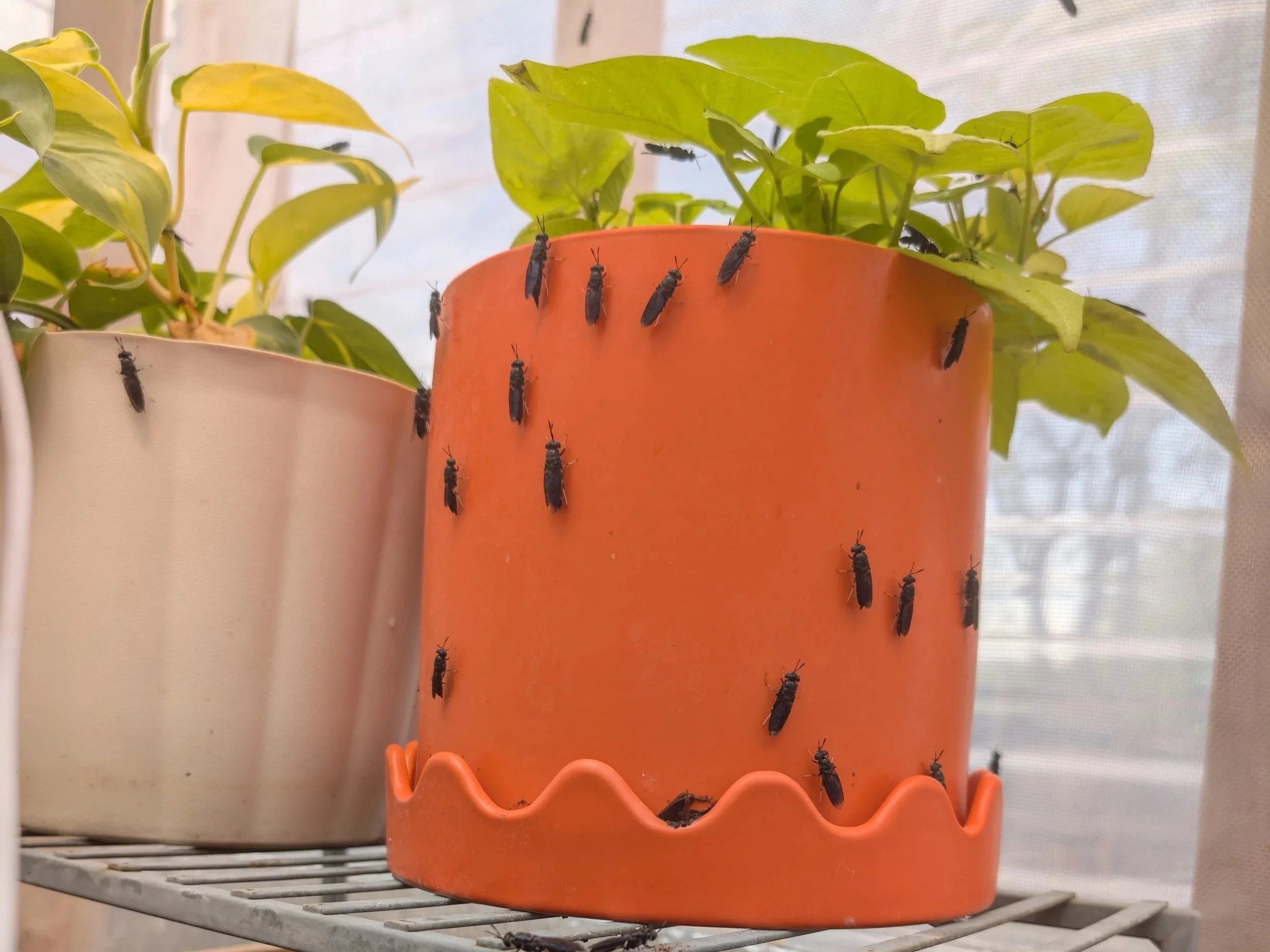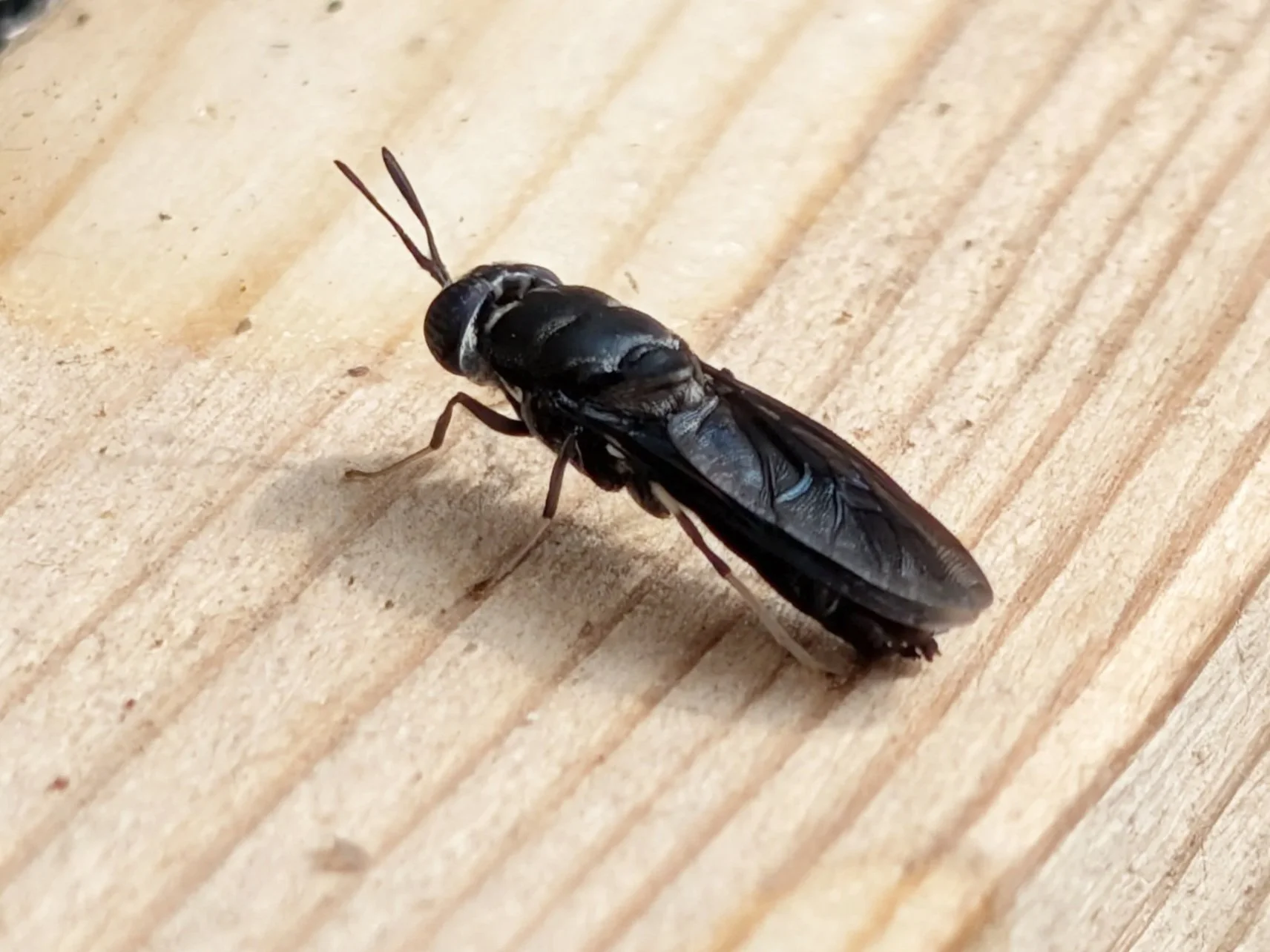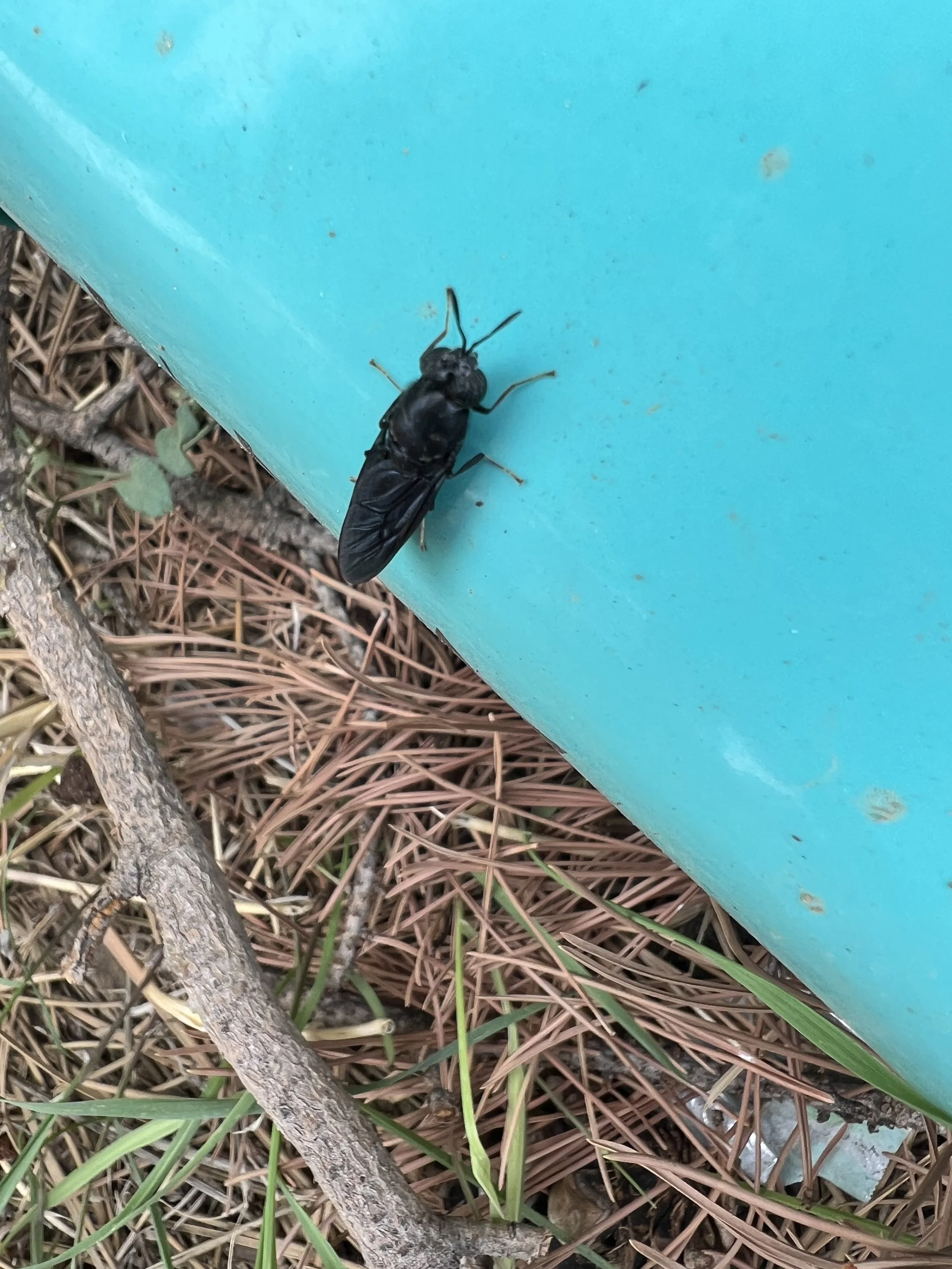
The Ultimate Guide to Black Soldier Fly Larvae (BSFL): Nature's Apex Recyclers
The Black Soldier Fly Larva (Hermetia illucens) is rapidly gaining recognition as one of the most sustainable and valuable insects in modern agriculture and waste management. Often called nature's apex recycler, BSFL are highly efficient bioconverters, transforming organic waste into two high-value products: a protein-rich biomass (the larvae themselves) and a nutrient-dense soil amendment (frass).
The BSFL Life Cycle: A Four-Stage Transformation
The black soldier fly's life cycle is characterized by rapid growth and non-feeding adult stages, making it an ideal candidate for farming.
1. Egg Stage: Adult female flies lay clusters of up to 500 eggs in dry cracks and crevices near decaying organic matter. These eggs typically hatch within three to four days.
2. Larval Stage: This is the most significant phase for both waste conversion and nutrient accumulation, lasting approximately 7–30 days. The larvae are creamy-white, voraciously consuming a wide range of organic waste and accumulating high levels of protein, beneficial fats, and minerals like calcium.
3. Pupal Stage (Prepupal/Puparium): Once the larvae reach maturity, they enter the prepupal stage, where they become darker and instinctively crawl out of the food source to pupate (a behavior used for self-harvesting). The pupae are non-feeding.
4. Adult Stage: Adult black soldier flies live for a short period (5–8 days) and do not feed. Their sole purpose is reproduction, which requires ample sunlight or specialized artificial light.
Key Applications and Products of Black Soldier Fly Larvae
The process of BSFL farming yields three primary resources, each with significant value.
1. Sustainable Protein (The Larvae and Prepupae)
BSFL are an alternative to conventional protein sources like soybean meal and fishmeal, offering a low-carbon, highly digestible solution.
Animal Feed: The larvae are used as a high-protein feed ingredient for livestock, poultry, aquaculture, and various pets.
Superior Nutrition: They offer a balanced profile of essential amino acids and a naturally high calcium-to-phosphorus ratio.
Product Spotlight: Live larvae ("Squirmy Grubbies") and dried larvae ("Golden Grubbies") are examples of this valuable product, as are hypoallergenic pet treats like "Grumbles."
2. Soil Amendment (Frass)
Frass is the non-digested material, waste, and shed exoskeletons left behind. This byproduct is a powerful, organic soil conditioner.
Nutrient-Rich: Frass contains nitrogen, phosphorus, and potassium (NPK) along with beneficial microbes.
Chitin for Plant Defense: It is a source of plant-digestible chitin, which stimulates a plant's natural defense systems, helping to induce resistance against certain diseases.
Liquid Bio-Stimulants: Frass can be used to create concentrated liquid products. Frassquatch PRO is an optimized hybrid hydrolysate and microbial extract that maximizes both free amino acids and live microbes for growth and plant defense. Frassquatch Tea is an aerated compost tea that extracts nutrients and beneficial biology from the frass.
3. Colony Tools and Accessories (The System)
Successfully raising BSFL requires specific tools to optimize the life cycle.
Egg Collection: Tools like "Clippie" or "The Coop" mimic the natural crevices BSFL females prefer for oviposition, ensuring a continuous colony supply.
Self-Harvesting Systems: Rearing bins often utilize a ramp or slope, such as the "Prepupae Harvest Ramp" and "Collection Insert" found in the "BSFL Bin Kit," which capitalizes on the prepupae's instinct to crawl out for easy, clean collection.
Non-Traditional and Novel Applications
Beyond feed and traditional composting, BSFL offer innovative solutions in environmental cleanup and utility.
Bioconversion of Pet Waste
BSFL are exceptionally capable of processing materials that are often problematic for traditional composting systems, including pet waste.
Waste Reduction: BSFL larvae can rapidly consume organic waste, including dog manure, significantly reducing the volume (by 50-80% or more) and mass of the original material.
Pathogen Reduction: Studies have indicated that the larvae are effective at neutralizing or reducing harmful bacteria like E. coli and Salmonella found in animal waste, making the resulting frass safer than traditional composted manure, though further post-processing is generally recommended for the frass from manure substrates before direct use on human food crops.
Circular Economy: By diverting pet waste from landfills, which produce powerful greenhouse gases like methane through anaerobic decomposition, BSFL offer a method to turn a significant ecological problem into a valuable resource (biomass and frass).
Highly Effective Fishing Bait
The larvae's natural characteristics make them a superb and sustainable alternative to conventional live bait.
Irresistible Movement: Live BSFL ("Squirmy Grubbies") are highly active and wriggly, which is known to attract and trigger the feeding instinct in freshwater fish such as bream, bass, and perch.
Nutritional Attractant: Their high protein and fat content makes them a rich, enticing meal for fish.
Sustainability: Farming BSFL for bait replaces the need for resource-intensive or wild-harvested bait like some worms or small forage fish, reducing pressure on wild ecosystems.
Forensic Entomology
In a more specialized, scientific application, the BSFL life cycle aids in legal investigations.
Estimating Postmortem Interval (PMI): The known, consistent developmental cycle of the BSFL, in conjunction with localized temperature data, allows forensic entomologists to estimate the minimum time since colonization (TOC) of decomposing remains.
Late Colonizers: While traditional flies (like blow flies) are often early colonizers, BSFL typically arrive later in the decomposition process, providing critical data for the advanced stages of decay where other insect evidence may be less reliable.
BSFL Management and Rearing Essentials
Maintaining a healthy and productive colony requires control over a few key environmental factors:
Temperature: Optimal larval consumption and development occur between 75 and 95 degrees Fahrenheit (24–35 degrees Celsius).
Humidity: The ideal relative humidity is around 70 percent, and the substrate must be moist but not saturated.
Diet: A diverse diet ensures rapid growth and high nutritional content.
Light: Specialized light sources are necessary to encourage mating in the adult flies.
BSFL offer a truly sustainable approach to waste management, pet nutrition, and soil health, closing the loop on the food system by converting low-value inputs into high-value outputs.
